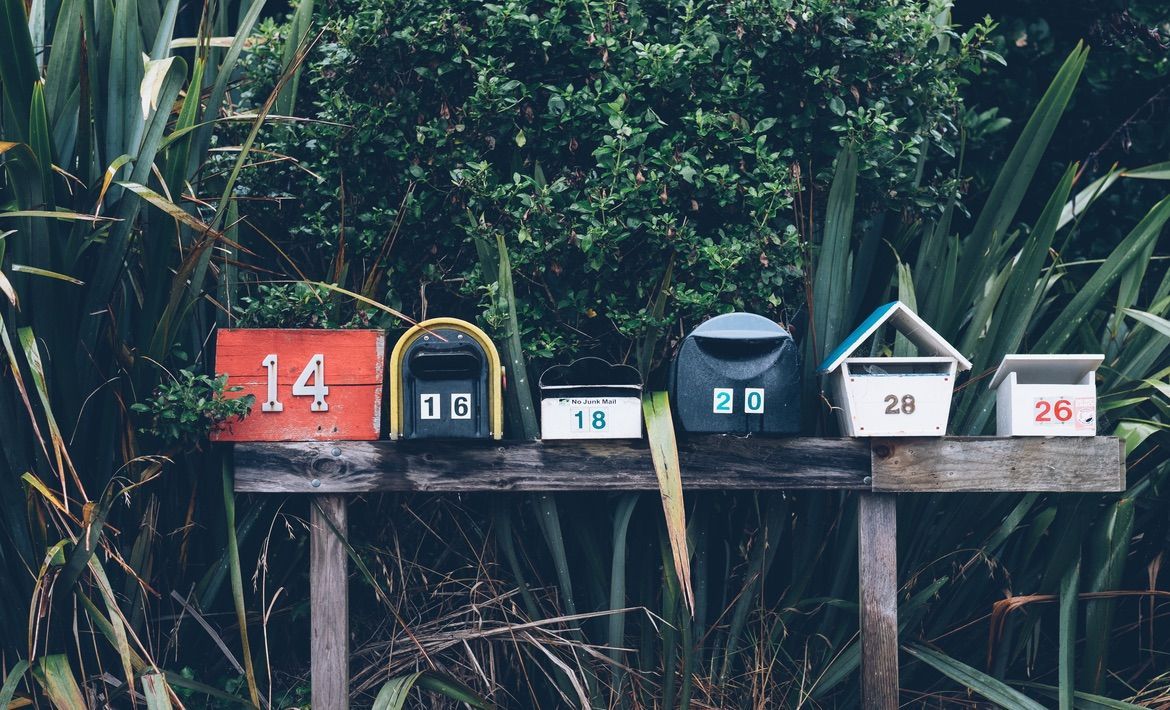This post is written by the guest author, Andriy Zapisotskyi.

Andriy is a Growth Lead at Mailtrap, a product that helps people inspect and debug emails before sending them to real users. He has over 5 years of experience in the field of marketing and product. Andriy loves to network with people. Running is his hobby and he enjoys discovering new places. Connect with Andriy via Linkedin or Facebook.
What is email deliverability? What are the most common issues associated with mail deliverability? What can you do to improve your deliverability rate?
This article answers all those questions, explaining what email deliverability is, what factors lead to a low deliverability rate and how you can improve your score to boost your marketing success.
What is email deliverability?
Email deliverability is the ability of an email to reach a person's email inbox, hence it is also called inbox placement. The term is a measurable metric and implies how many of the emails sent have reached the recipients' email boxes.
80% - 90% of emails delivered is considered a good result.
🗣️ mailmodo
Mail deliverability is an important factor in influencing the email marketing success of any company. In fact, no marketing strategy works, if the recipients don't receive your messages in the first place.
It's crucial to make sure your inbox placement rate is high. If it's not, measures should be taken to improve the email deliverability in your campaigns. A way to do this is by identifying any potential issues preventing messages from reaching the audience's inboxes, eliminating them, and taking steps to increase email deliverability.
Common email deliverability problems
Since the path your email follows can end at different stages, various factors contribute to the successful deliverability of emails. Issues that prevent your message from being delivered can occur at all steps of an email campaign, from bouncing right after sending to reaching an email inbox and being marked as spam.
So what are the most common issues you can come across when experiencing a poor deliverability rate?
High bounce rate
There are two types of email bounces, namely hard and soft bounces.
A hard email bounce takes place when the recipient's email address cannot be reached. In this case, it’s either invalid or no longer exists.
A soft email bounce occurs when…
- You send too many emails from a single address, and only a few of them are engaged with
- There is an unexpected change in the frequency or volume of messages sent
- The recipient's inbox is full, which is rather a rare occurrence
In any case, bouncing doesn’t do your email marketing any good. If your bounce rate is 2% or more, Internet Service Providers (ISP) start to consider your mailing list as suspicious.
Being flagged as spam
An email can be delivered to the spam folder automatically for many reasons, like the following…
- You've hit a spam trap
- Your IP address has been associated with sending spam before
- You're using spam triggering words in your messages (i.e., "free," "this is not spam,"
Regardless of why your emails are flagging spam filters, this is a sign that the ISP doesn't consider you a reliable sender.
Read further: How to make sure your emails don’t go to spam
Low engagement with emails
When your message reaches the recipient's inbox, the way a recipient engages with it affects the deliverability rate too. For example, they can leave the email unopened, which is no engagement. That’s before we even get to deleting it or marking it as read without opening it.
But it's even worse for your email deliverability if a recipient opens your email and then unsubscribes from the newsletter or marks it as spam.
Low or no engagement can occur if…
- You're hitting the wrong audience; content is simply irrelevant to them
- You send emails too often
- Your company isn’t familiar to a recipient
All of these can be tackled by personalizing your email campaigns to capture the audience's attention and increase engagement.
What affects email deliverability?
Inbox placement is affected by lots of factors, but they can all be collated as a single concept — the sender's reputation. Mail providers measure each sender's reputation and, based on how good it is, filter the messages they send to those successfully delivered or spam.
Overall, lots of factors make up your reputation as a sender and affect your deliverability rate, like the following...
- Switching between multiple email providers
- Unauthenticated domain
- A shared IP address
- A fast increase in your sent email volume
- High bounce rates
- Low recipients' engagement with your emails
- High complaint and "This is spam" rates
- Irrelevant email content
Of course, building a good sender's reputation for your company's email address takes time. Being familiar with the factors impacting it and avoiding the mistakes listed will help you increase your mail deliverability.
How to increase email deliverability
If you've just discovered that your inbox placement rate is low, here are nine handy tips to increase it.
Tip #1. Don't buy email lists
When purchasing a list of contacts, you…
- Send mail to people without their consent
- Have every chance of reaching the wrong audience
- Might increase bounce rates because of invalid or non-existant contacts
- Risk hitting a spam trap
All this leads you directly to a blacklist, lowering your deliverability rate.
Tip #2. Validate your mailing list regularly
Email validation implies checking your mail list for invalid addresses and potential spam traps and is a must to keep a good email deliverability rate. Run checks once a month with tools like Clearout, ZeroBounce, MailerCheck, or NeverBounce. You'll have a clean subscriber list all the time.
Tip #3. Warm up your IP address
Don't start implementing your email marketing strategy with campaigns of huge volumes. Instead, increase the number of emails you send gradually.
Test your volume for a month to see how it affects inbox placement. High deliverability and engagement mean that you can increase your volume for the next month. If the results are the opposite, slow down until they get back to normal.
Tip #4. Stick to a schedule
Set a schedule for your campaigns and follow it. Having a plan helps you stay consistent. Keep an eye on email send-frequencies so that you don't overdo it and monitor your results easier, all contributing to a warmer IP address and a better deliverability score.
Tip #5. Send relevant and engaging content
To get great stats, your emails have to catch attention and engage. One of the ways to deliver valuable messages is by mailing list segmentation, which you can do directly in your email CRM system. This way, you'll target the right audience for your emails, increasing the chances of your messages being delivered, opened, and interacted with.
Tip #6. Provide the option to unsubscribe
While making the option to unsubscribe noticeable to your audience may seem counterintuitive, it can actually save your inbox reach rate.
By placing the Unsubscribe button where it's easy to find, you prevent people that are not willing to receive emails from leaving them unopened or reporting them as spam. Eventually, this helps clean your mailing list and increase engagement among the recipients you keep.
A good place to locate your Unsubscribe link is at the very top or bottom of your email, like in this example…
Tip #7. Authenticate your email domain
To avoid any potential issues with your sender's reputation and deliverability, make sure to enable DomainKeys Identified Mail (DKIM) and Sender Policy Framework (SPF) for your email address. These will secure it and minimize your risks of sending out phishing.
Authenticated email domains are recognized by ISPs and validate you as a reliable sender.
Tip #8. Get recipients' consent via double opt-in
If you reach out to people who didn't agree to it, with a purchased or rented mailing list, you risk emailing people that haven't consented to receive mail from you. This will most likely lead your ISP to consider all emails you send as spam, even to people who have given their consent to you.
To get a good inbox placement rate and avoid being marked as a spam sender by ISPs, you must only send emails to users that have allowed you to do it. One of the ways to safeguard your list of recipients is via double opt-in. This implies that users have to take two steps to verify their subscription to your marketing newsletter or other such emails.
Verification can then look like the following…
Option 1:
- Step 1: Entering their email address to subscribe
- Step 2: Checking a box to give consent to receive mail from you before their email is shared
Option 2:
- Step 1: Entering their email address to subscribe
- Step 2: Confirming their email via a link in a letter you send to them
Tip #9. Track your deliverability score
Always keep an eye on how your deliverability rate changes as you go. To improve your deliverability score, track the following metrics…
- Your sender's reputation
- Bounce rate
- Audience engagement
There are plenty of email deliverability tools like Sender Score or Mailtrap you can use to see where you stand with these metrics. Based on the reports, you'll see whether you need to improve in any of these to increase deliverability.
Wrap Up
Mail deliverability is defined by the percentage of emails delivered from the number of emails sent in a single campaign. Some of the most common issues you can experience with deliverability score are high bounce rates, spam flagging and low engagement with the letters.
To get a high deliverability rate, start with checking your current score and identifying the issues you're having. Next, take into account the 9 tips we've listed to increase your inbox placement and make the most use of email as a marketing channel.
Table of Contents
Crack the sales formula with CRM Lab
Twice a month, receive actionable CRM content to your inbox.


